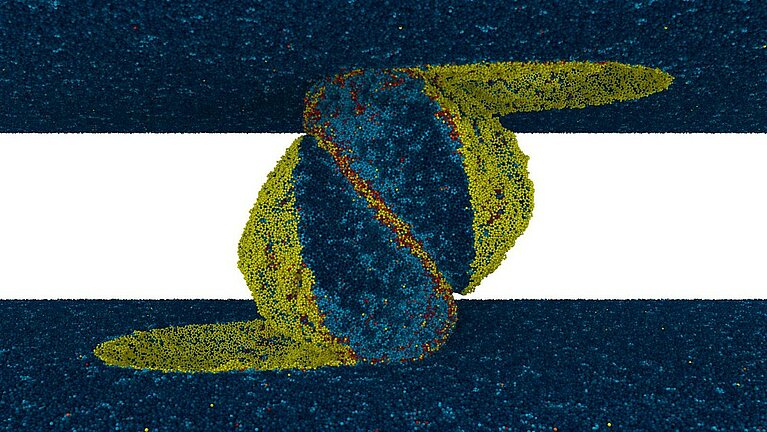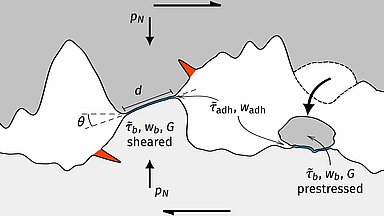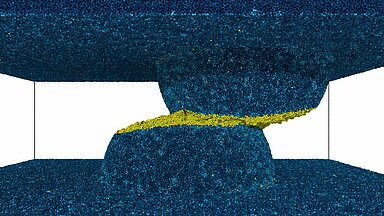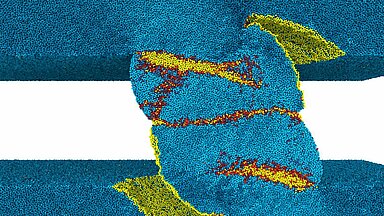May 15, 2019 - by Tobias Brink, EPFL
It has long been known that rubbing surfaces are worn by the formation of debris particles, but the microscopic processes behind this phenomenon are still under discussion. But understanding these processes is crucial in order to derive useful wear laws based on physical insights instead of ad-hoc emprical relations. In a study conducted in the Computional Solid Mechanics Laboratory (LSMS), the researchers use atomistic modeling to describe the debris creation process at the nanoscale when the adhesion between the surfaces is reduced—a case that is in fact expected in most material contacts.
By conducting simulations of a large number of individual surface asperity collisions on Piz Daint supercomputer with varying contact angles and interface properties, they find that the asperities can either deform plastically, form wear particles, or slip along the contact junction surface without significant damage. The work shows at the microscopic level why flatter surfaces are more amenable to slip and low wear and, conversely, wear particles result more easily from high-angle asperity collisions on rougher surfaces. All of this can be described by a predictive, analytical model at the asperity level based on interface properties and roughness parameters.
In the future, the LSMS researchers hope to use these insights to predict wear rates and the emission of particles in various contact scenarios.
Originally published by EPFL >>
Funding
This work was supported by a grant from CSCS under project ID s784.
Reference
T. Brink and J.-F. Molinari, “Adhesive wear mechanisms in the presence of weak interfaces: Insights from an amorphous model system”, Phys. Rev. Mater. 3, 053604 (2019), https://doi.org/10.1103/PhysRevMaterials.3.053604




